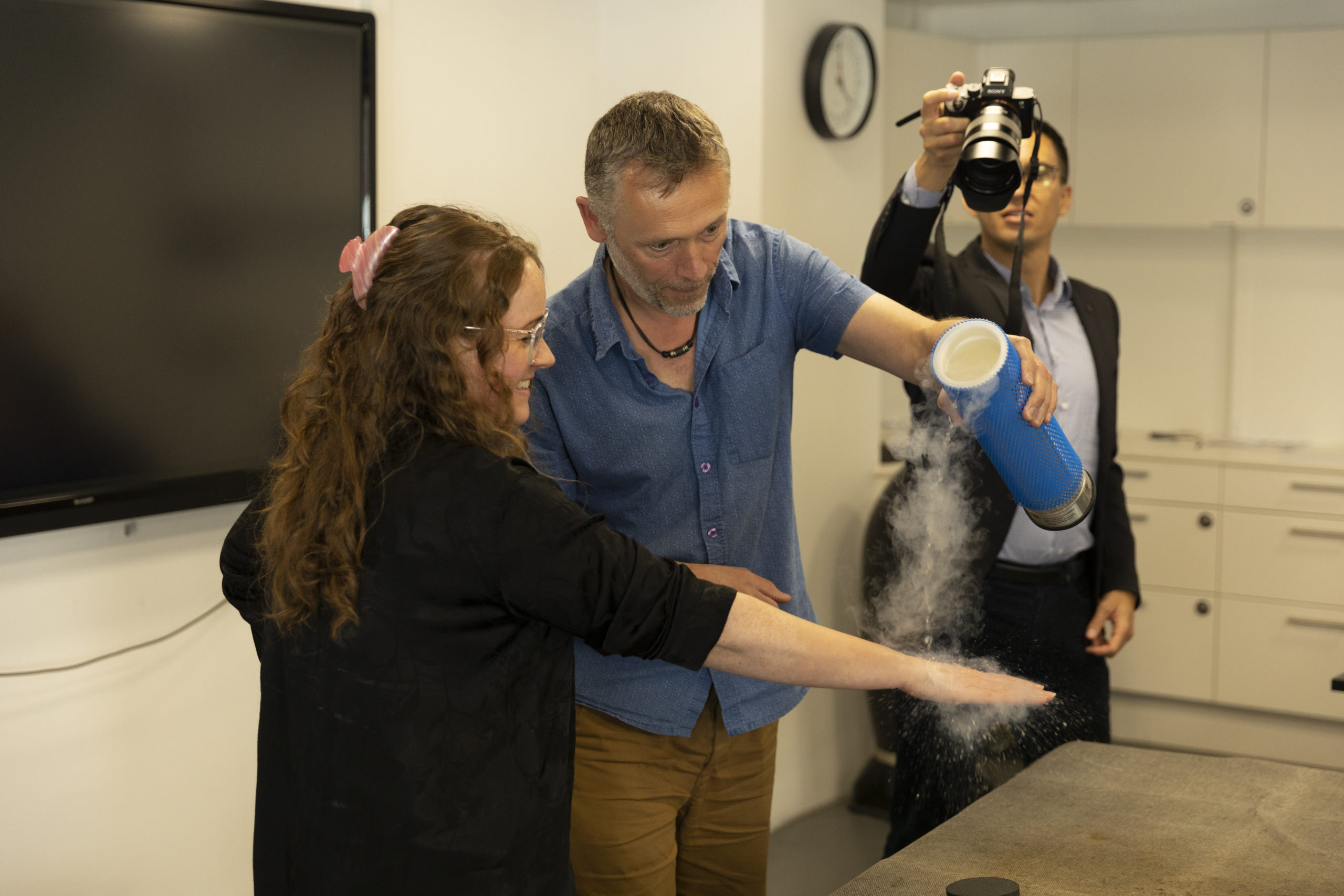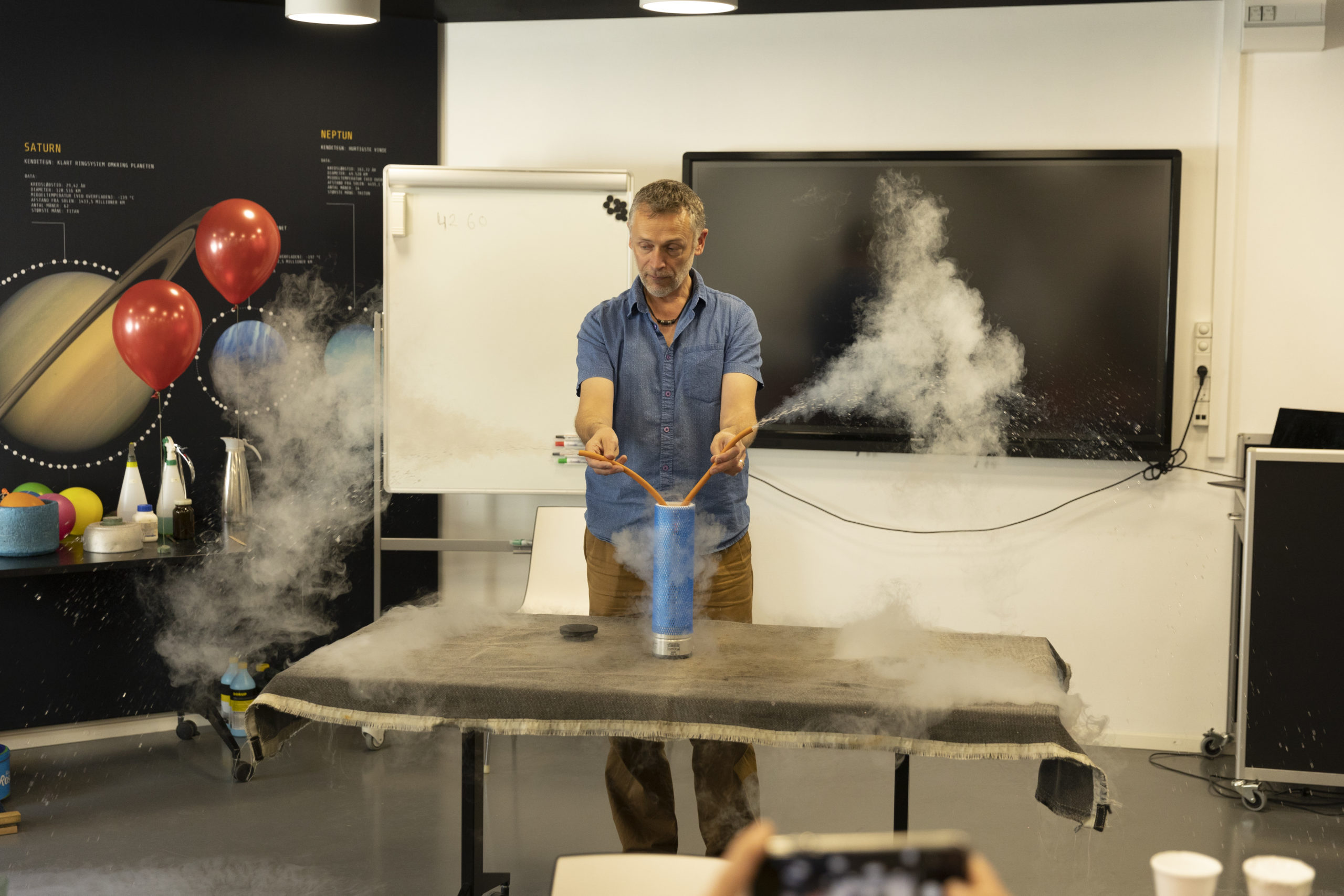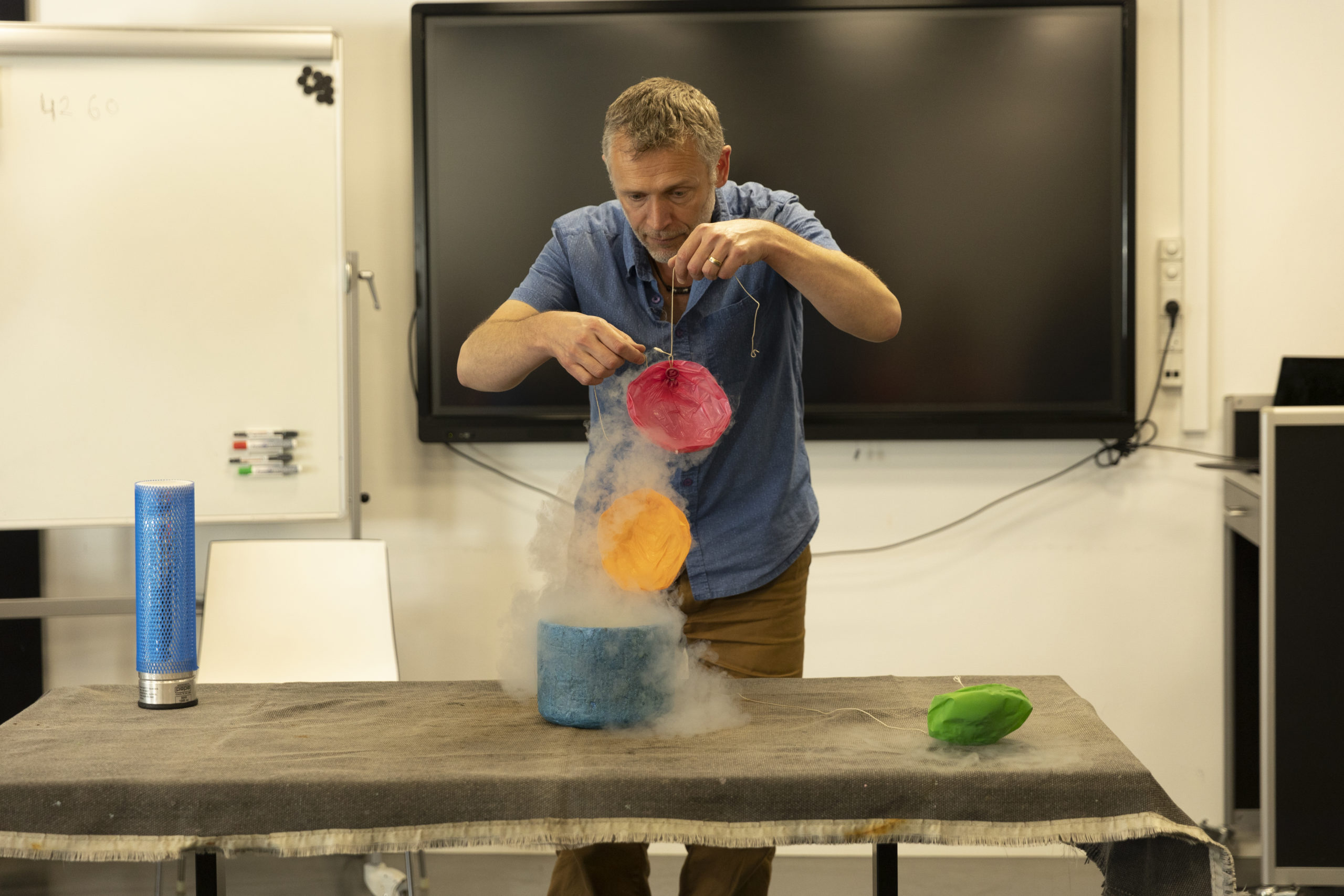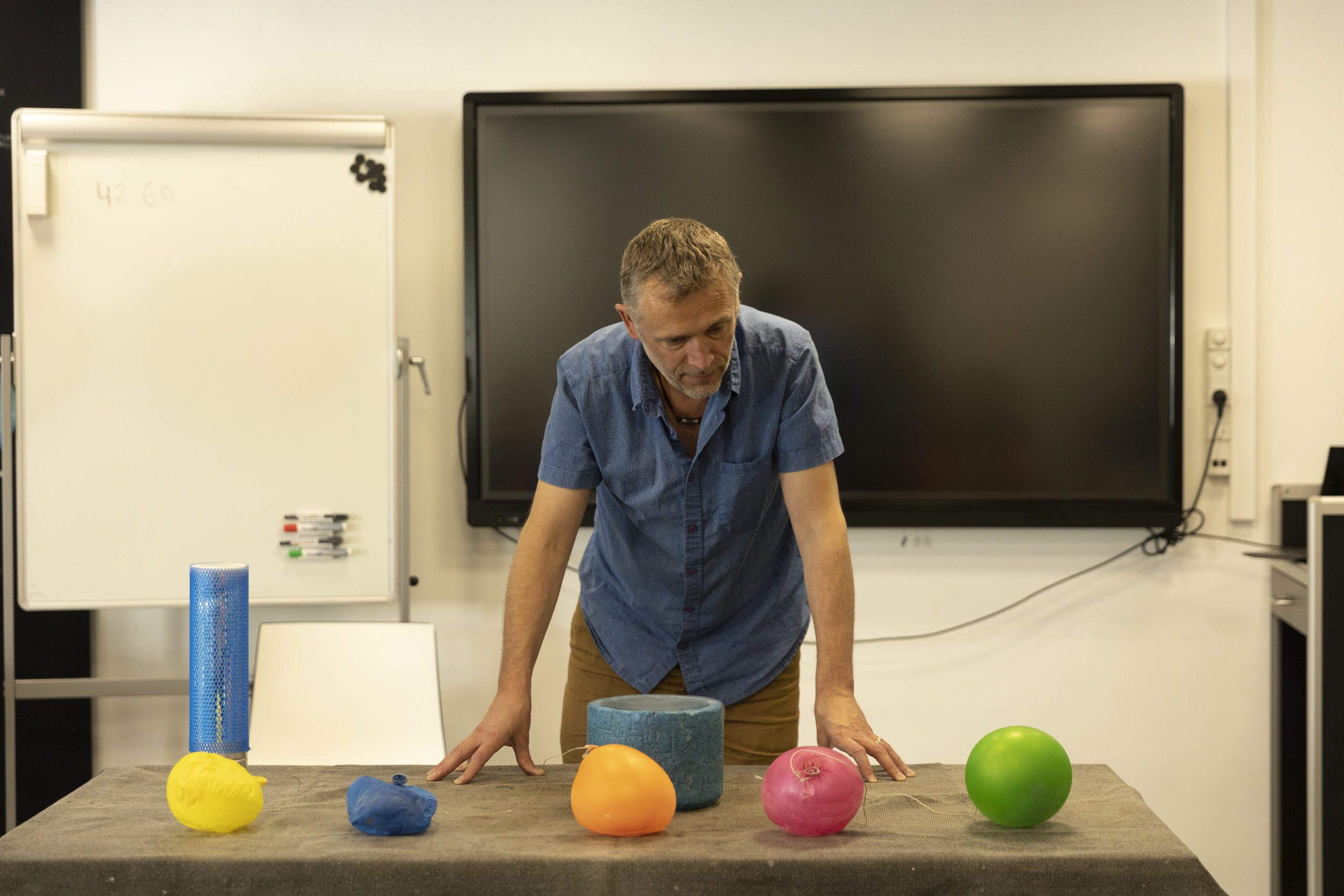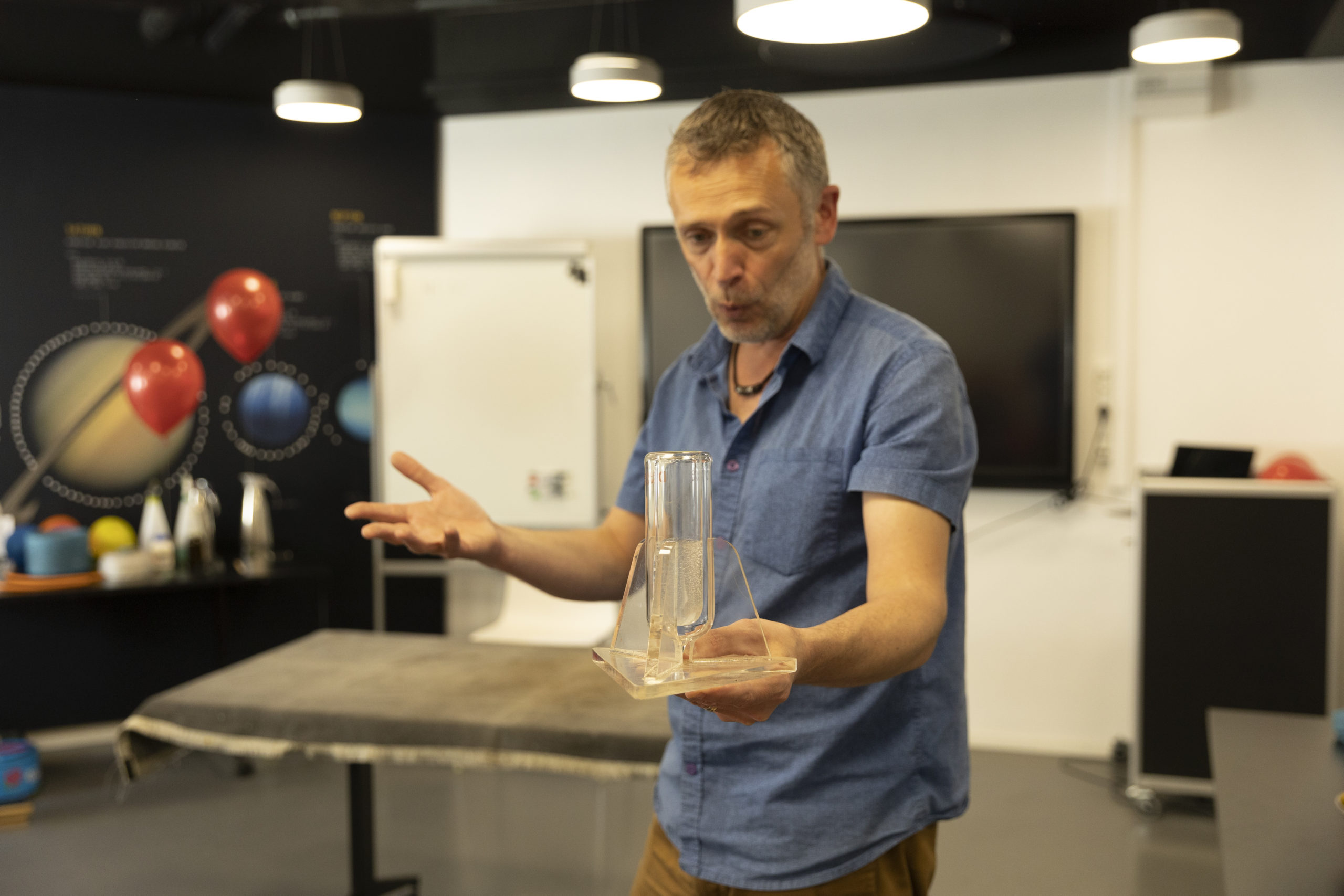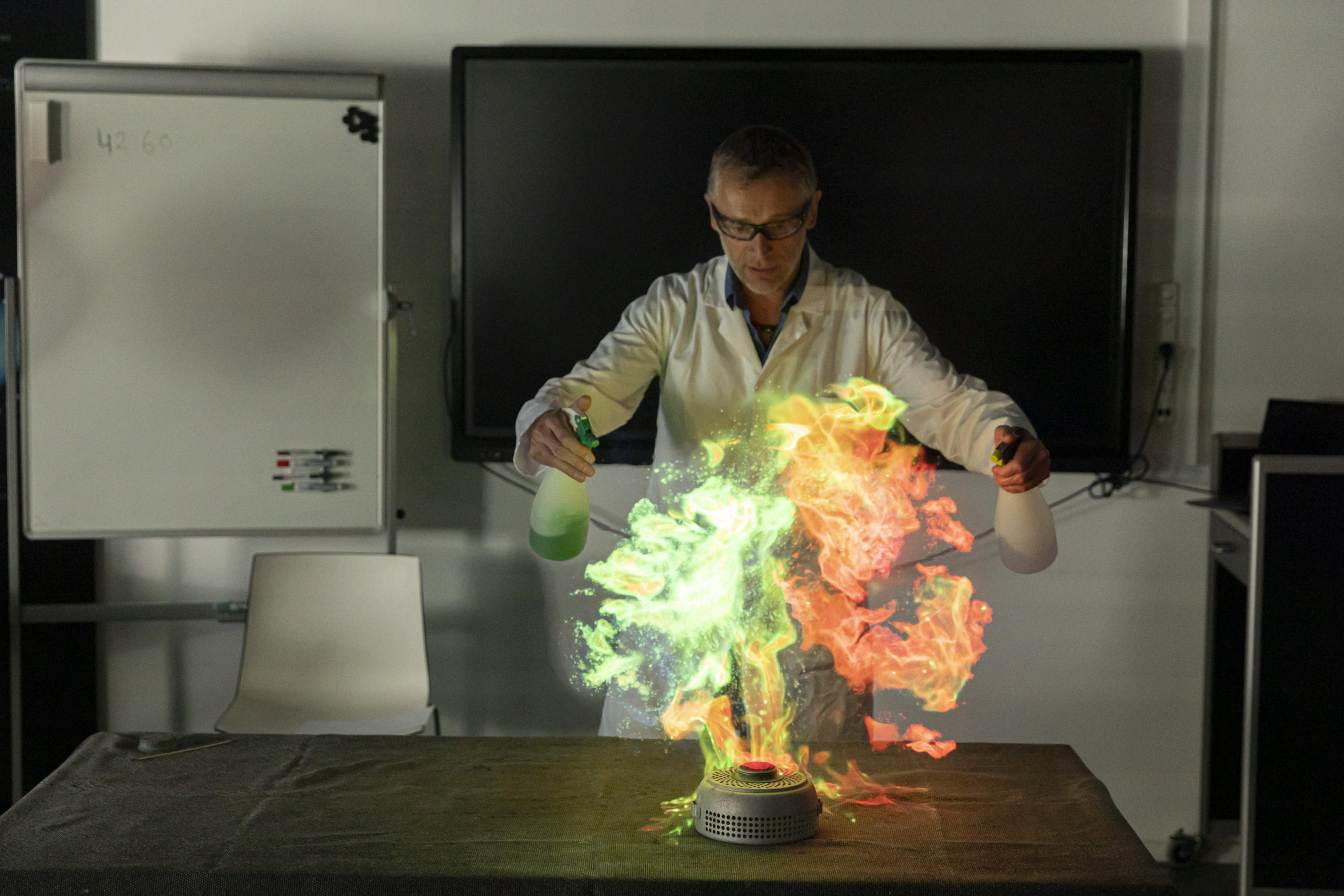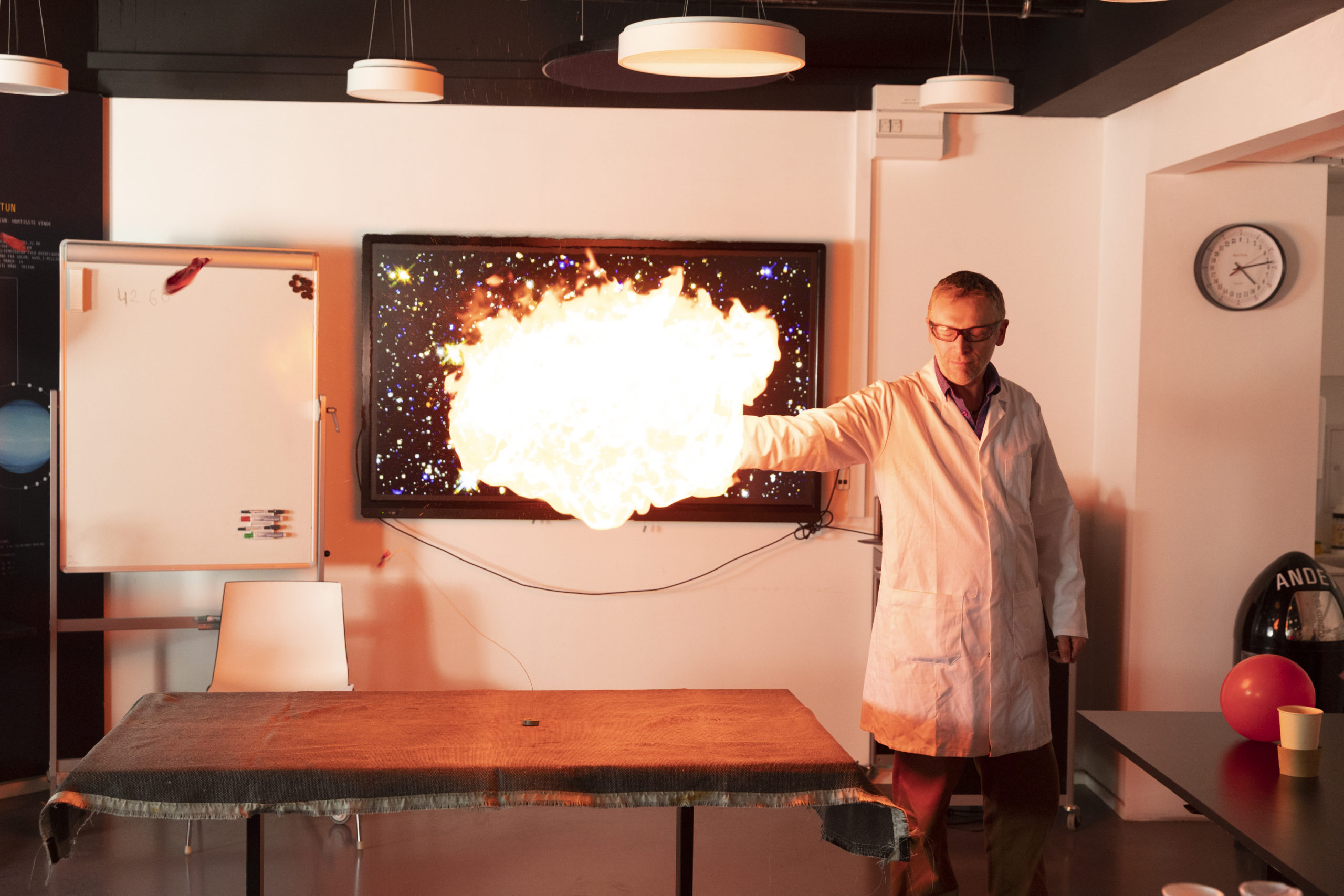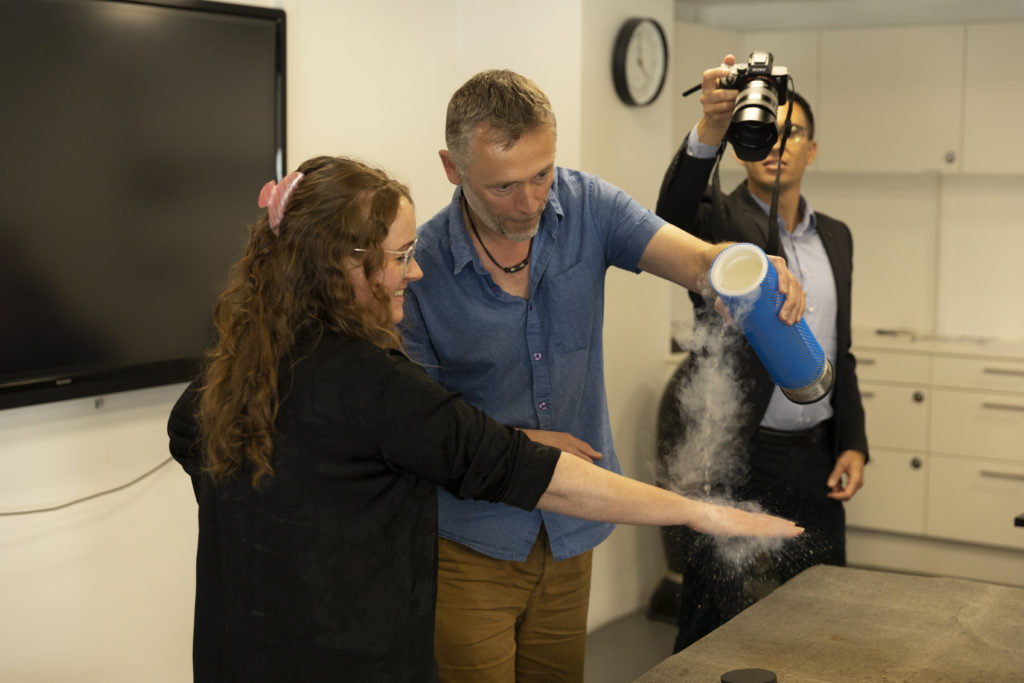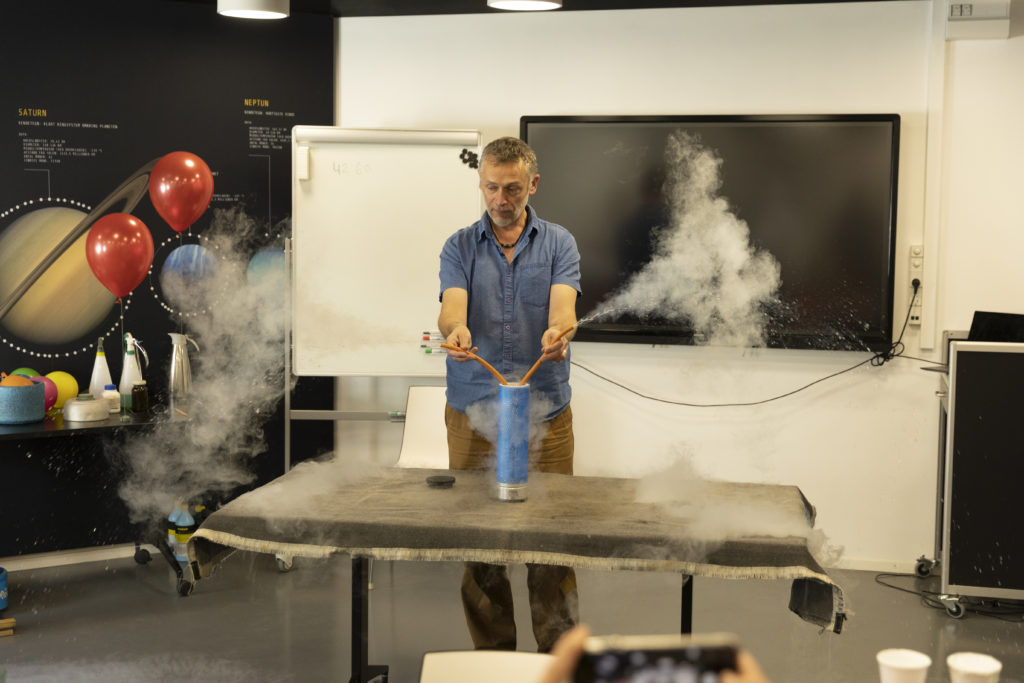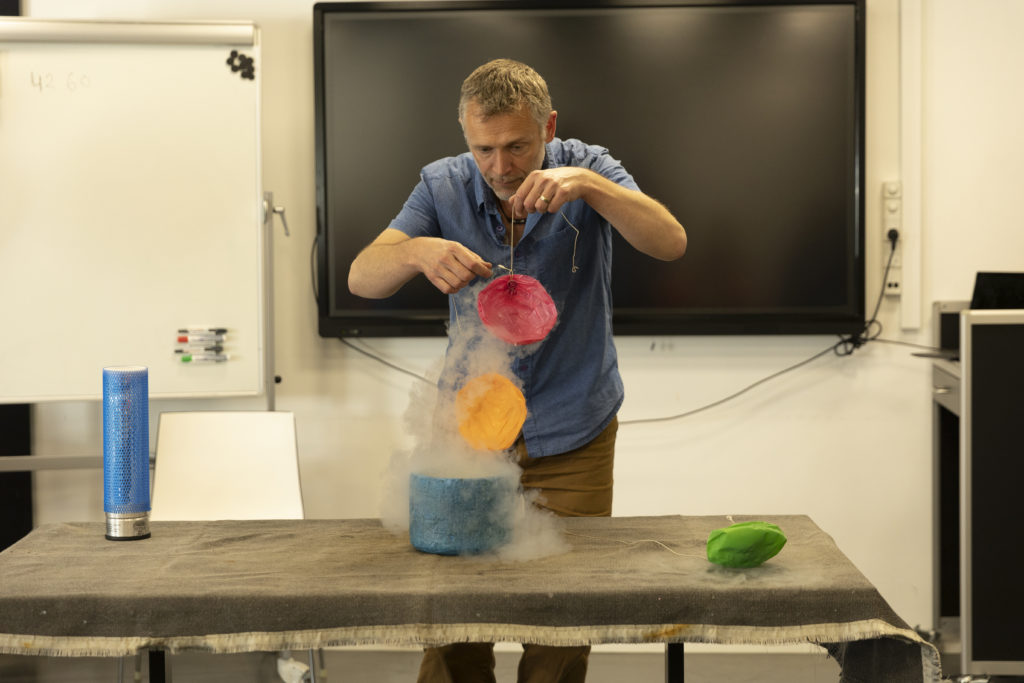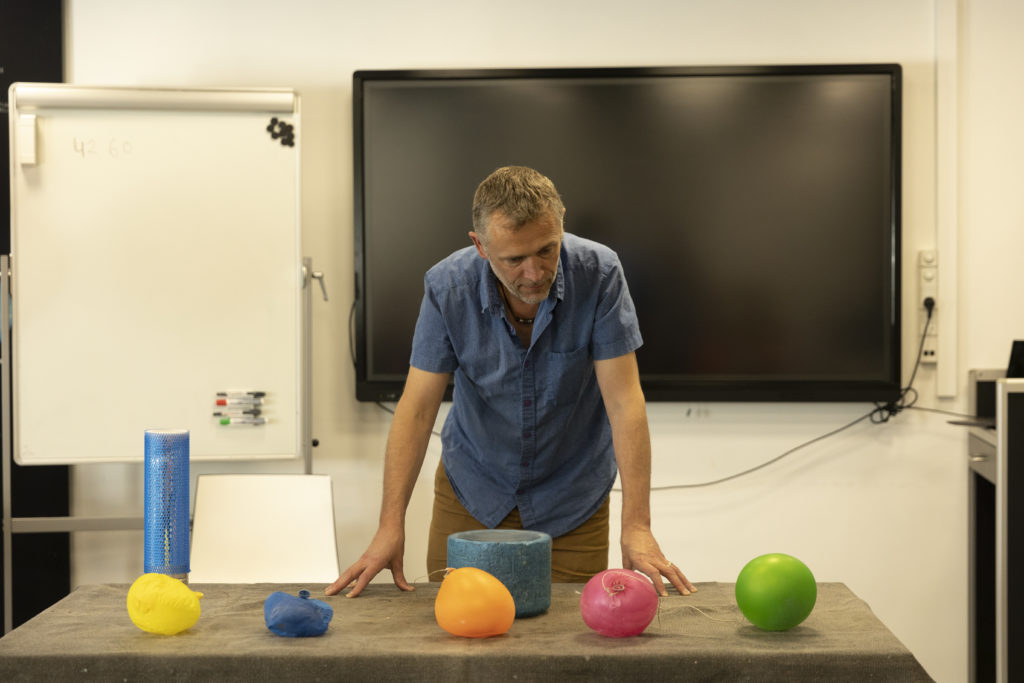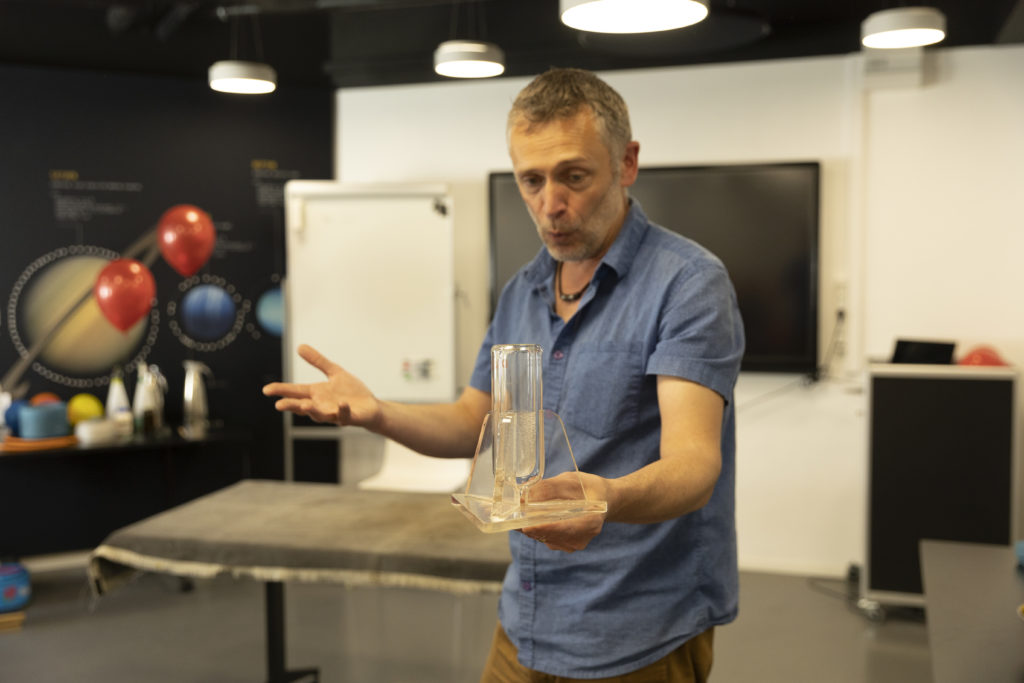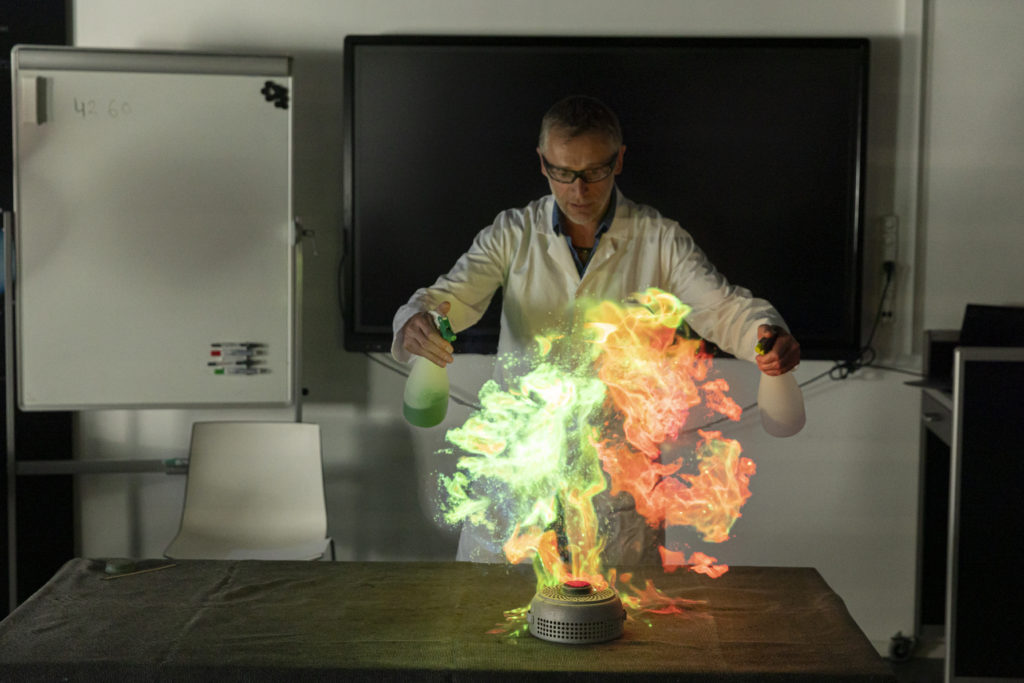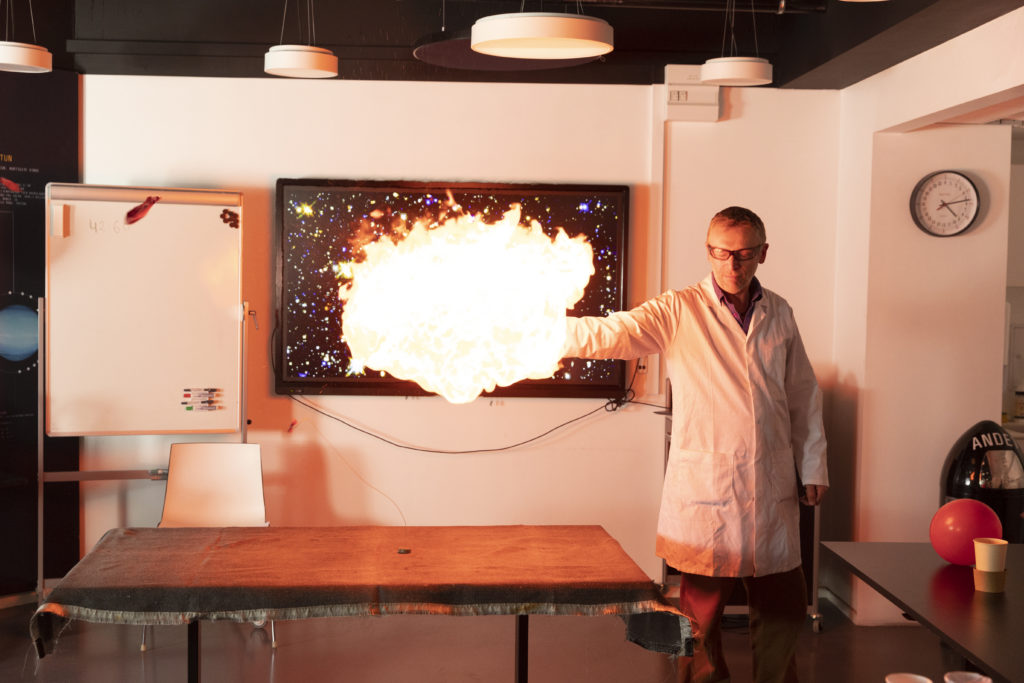Setting Details
These demonstrations are ideally delivered in-person using tables set up in front of an audience either on chairs or with auditorium seating. They can easily be delivered in a classroom setting provided there is adequate room, and online provided you have a decent webcam and audio devices.
Focusing on states of matter, these demonstrations form Part Two of a longer show examining the nature of science and scientific process;
- observe,
- predict,
- test,
- and explain.
These demonstrations seem to defy the expectations of the audience; thus, they are required to question the outcomes.
It is by this process of questioning that they arrive at the true explanations of what they have witnessed.
Children are encouraged to contribute to the discussion, and debating is also promoted amongst the audience. An informal, conversational delivery style will encourage those who are less confident to join in.
Learning Objectives
- Stimulate curiosity -essential for exploring roles in the space industry
- Encourages scientific and critical thinking – a useful life skill
- Reinforcing knowledge of scientific methodology – underpins space science
- Understanding streamlining and air as a mixture of gasses
- Introducing or reinforcing the particle model of solids, liquids and gasses e.g. evaporation, condensation and freezing
- Thermal expansion
- Reversible reactions
Materials needed
- At least one large table. Two or three tables would be best
- Two pieces of A4 paper
- Liquid nitrogen
- Suitable cryogenic flask
- Large polystyrene/cryogenic pot
- Balloons inflated to just fit inside the polystyrene pot
- A length of rubber hose approx. 40cm in length
- Particle models of solid, liquid and gas (some polystyrene balls connected together as a solid, the same number in a clear plastic bag for liquid, and a couple loose representing a gas.
Script/programme of activity
Begin by showing the audience two pieces of identical A4 paper. Ask them the question “if I drop these two pieces of paper from the same height at the same time, which will hit the ground first?”. Count down from five, and whilst you are counting scrunch one of the pieces up into a ball (choose the least voted-for!). This piece will (usually!) hit the ground first. Ask why this happened and discuss air resistance and streamlining. Use this as a segue to talk about air, and that all matter is a collection of articles, and then discuss the difference between solids, liquids and gasses.
Most of the air in the Earth’s atmosphere is nitrogen, and these particles can also be changed into a liquid if you cool them enough – liquid nitrogen(LN2)!
NOTE: Liquid nitrogen has a boiling point of -195.8°C and requires correct training and handling, and specialist equipment for safe usage. DO NOT ATTEMPT THESE DEMOS UNLESS YOU HAVE BEEN TRAINED CORRECTLY! Be sure to prepare and adhere to your risk assessment!
Ensure that there is at least 3m between you and the audience. The first thing to do is pour a small amount of nitrogen onto a surface (or even your own hand – be sure to have your hand is palm downward and be wary of hairs that can trap the LN2 near your skin), and get the audience to note the lack of any wetness or residue – evaporation. Explain the differences in temperature between the surface and the LN2.
Then place the rubber tubing into the LN2. As the liquid inside the lower portion of the tube evaporates and expands, LN2 is forced up the tubing and erupts in a fountain of LN2! The flexible rubber tubing will no longer be flexible.
Another great demo with LN2 is making inflated balloons “disappear”. Putting an inflated balloon in a pot and pouring liquid nitrogen over the balloon causes the balloon to deflate. The liquid nitrogen is condensing the gas in the balloon, turning it into a liquid. Liquids take up less volume than gas and so the balloon deflates. On warming, the balloon inflates as the liquid air boils and turns back to a gas. There has been no chemical reaction, there is just a change of state from gas to liquid and back to gas.
It is also fun to plunge living things into the LN2 (not animals!). Bananas can be used as hammers, and flowers become brittle and shatter when hit or crushed.
Teacher/educator
It is useful for the teacher/educator to encourage the quieter members of the class to join in with discussions.
Key elements for inclusivenes
These demos require the audience to guess the outcomes of each experiment, and this is achievable for most audience members.
Websites
Safety: https://www.boconline.co.uk/en/images/nitrogen-liquid_tcm410-631120.pdf
Videos
Balloon in LN2:
Extra information
For more information please contact information@explorerdome.co.uk




